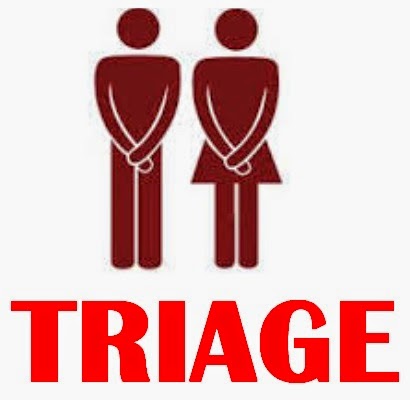 Triage refers to the assessment and management of the patients on priority basis or clinical urgency or level of severity. Triage is a necessary element of emergency department (ED). In other words, it is a time-critical intervention which allows emergency room (ER) services providers to assess and allocate proper treatment areas to the patients.
Triage refers to the assessment and management of the patients on priority basis or clinical urgency or level of severity. Triage is a necessary element of emergency department (ED). In other words, it is a time-critical intervention which allows emergency room (ER) services providers to assess and allocate proper treatment areas to the patients.
Triage helps determining the urgency of life support
and the key problems of the patient, depending upon the appearance, work of
breathing and circulation of skin. It categorizes the patients in different
levels:
Category 1
Immediate management! The patient needs
treatment in 2-5 minutes of arrival, e.g. cardiac and respiratory arrest, immediate risk to airway, extreme respiratory distress, blood pressure below 80 mmHg, Glassgow coma scale (GCS) less than 9, unresponsive to painful stimulus, hypoventilation, intravenous drug overdose, severe behavioral problems where immediate violence is expected.
Category 2
Imminently life-threatening! The patient needs
treatment in 10 minutes of arrival, e.g. airway risk (severe stridor or
drooling with distress), severe respiratory distress, circulatory compromise, blood sugar level (BSL) less than 55 mg/dl, drowsy (GCS <13), very severe pain, fever with signs of lethargy, high-risk history, major multi-trauma or severe local injury and acute dysphagia.
Category 3
Potentially life threatening! The patient can be
managed in 30 minutes of arrival, e.g. moderately severe blood loss, moderate
shortness of breath, persistent vomiting, moderate shortness of breath, oxygen saturation 90-95%, BSL more than 180 mg/dl, seizures, head injury with short loss of consciousness and dehydration.
Category 4
Potentially serious! The patient can be treated
in 60 minutes of arrival, e.g. mild hemorrhage, moderate pain, foreign body
aspiration without respiratory distress, vomiting or diarrhea without
dehydration, difficulty in swallowing, moderate pain, foreign body eye or eye inflammation and minor limb trauma.
Category 5
Less urgent! The patient can be treated in 2
hours of arrival, e.g. minimal pain, minor injuries, immunization only and other
low risk conditions.
Remember, note date, time, triage officer's name, chief complaint, short history, relevant findings, area and treatment allocation and reassessment.
Note: ER service providers are at potential risk of aggressive behavior of the injured or sick patients or their relatives. Therefore, they must have non-threatening environment with as maximum privacy as possible.
Keywords: Triage, Emergency room triage, Emergency triage, Emergency room, ER services and triage, Triage field
No comments:
Post a Comment
Thanks for your precious time and nice feedback. Also, you can join this site for regular updates.